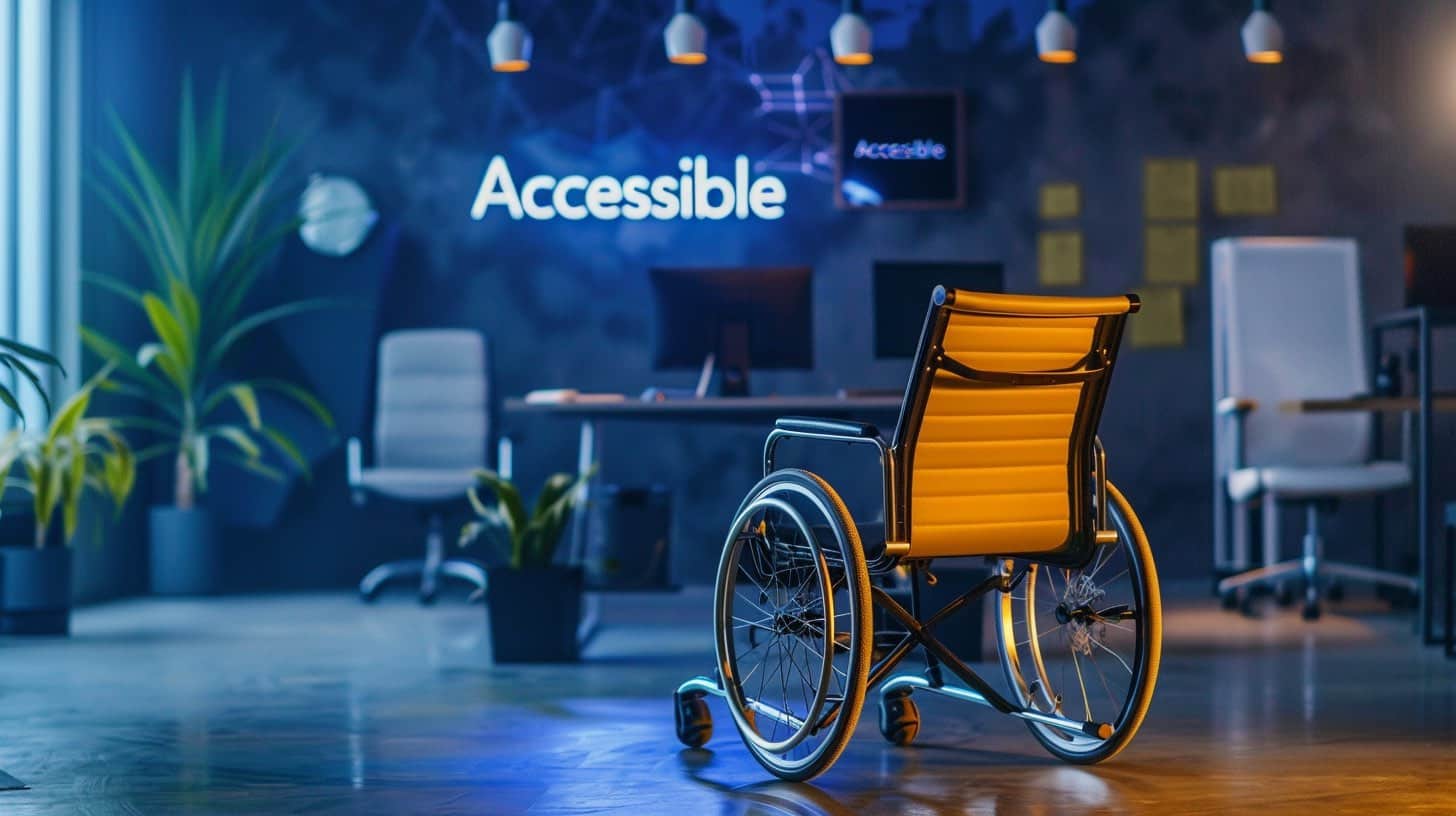In today’s diverse workforce, creating an accessible work environment is a legal requirement and a moral and strategic business decision. Accessibility ensures that all employees, regardless of their abilities or disabilities, have equal opportunities to thrive and contribute to the organisation’s success.
According to accessibility advocates, a truly inclusive workplace ensures that every employee has the tools and support they need to thrive regardless of ability. As businesses evolve, so do the spaces where employees work. More than just physical ramps or accessible restrooms, creating an accessible work environment encompasses digital tools, communication systems, and policies that promote equity for all employees. The key to an inclusive, accessible workplace lies in acknowledging that everyone’s needs are unique and that it’s essential to build a culture of accessibility from the ground up.

Get Building Improvements Right
Modifications to the physical workspace are foundational in creating an accessible environment. According to the Disabled Living Foundation, around one million wheelchair users in the UK can significantly benefit from workplaces that incorporate ramps, lifts, widened doorways, adapted workstations, and user-friendly facilities like toilets and kitchens.
Modifying Physical Spaces
Modifications to the physical workspace are pivotal in creating an accessible environment. According to the Disabled Living Foundation, around one million wheelchair users in the UK can significantly benefit from workplaces that incorporate ramps, lifts, widened doorways, adapted workstations, and user-friendly facilities like toilets and kitchens.
Adjusting Working Patterns
The Equality Act 2010 also encourages employers to consider alterations to typical working patterns. Flexible working hours, remote working opportunities, and part-time hours can considerably assist employees with disabilities.
Providing Special Equipment
Providing assistive technologies like screen-reading software, induction loops, or sign-language interpreters can be transformative for those with visual or hearing impairments.
Fostering an Inclusive Culture
The correlation between inclusive workplace cultures and business success is well-documented. A pleasing statistic from the Business Disability Forum suggests that 90% of respondents have increased confidence in doing business with companies that reflect diversity, including disabled people, in advertising.
Ensuring Mental Wellbeing
Mental health cannot be overlooked in the quest for workplace accessibility. A supportive environment actively encouraging open conversations about mental health can significantly contribute to workplace well-being.
Regular Inclusivity Consultations & Reviews
Understanding that the needs of individuals with disabilities can be incredibly diverse is crucial. Regular consultations with employees to comprehend their needs can help tailor a more effective accessibility approach.
Legal Obligations
As an employer, the legal framework empowering workplace accessibility in the UK includes the Equality Act 2010, which outlines the need for ‘reasonable adjustments.’ Complementing this, the Health and Safety at Work Act 1974 stipulates the general duties of employers towards the health, safety, and welfare of all their employees.
Creating an accessible work environment is a continuous journey of learning and adaptation. From physical space design to digital platforms, inclusive policies, and ongoing education, accessibility requires a holistic approach that benefits employees and employers. By making accessibility a priority, businesses improve employee satisfaction and foster a culture of innovation, adaptability, and diversity—essential for thriving in today’s competitive world.





